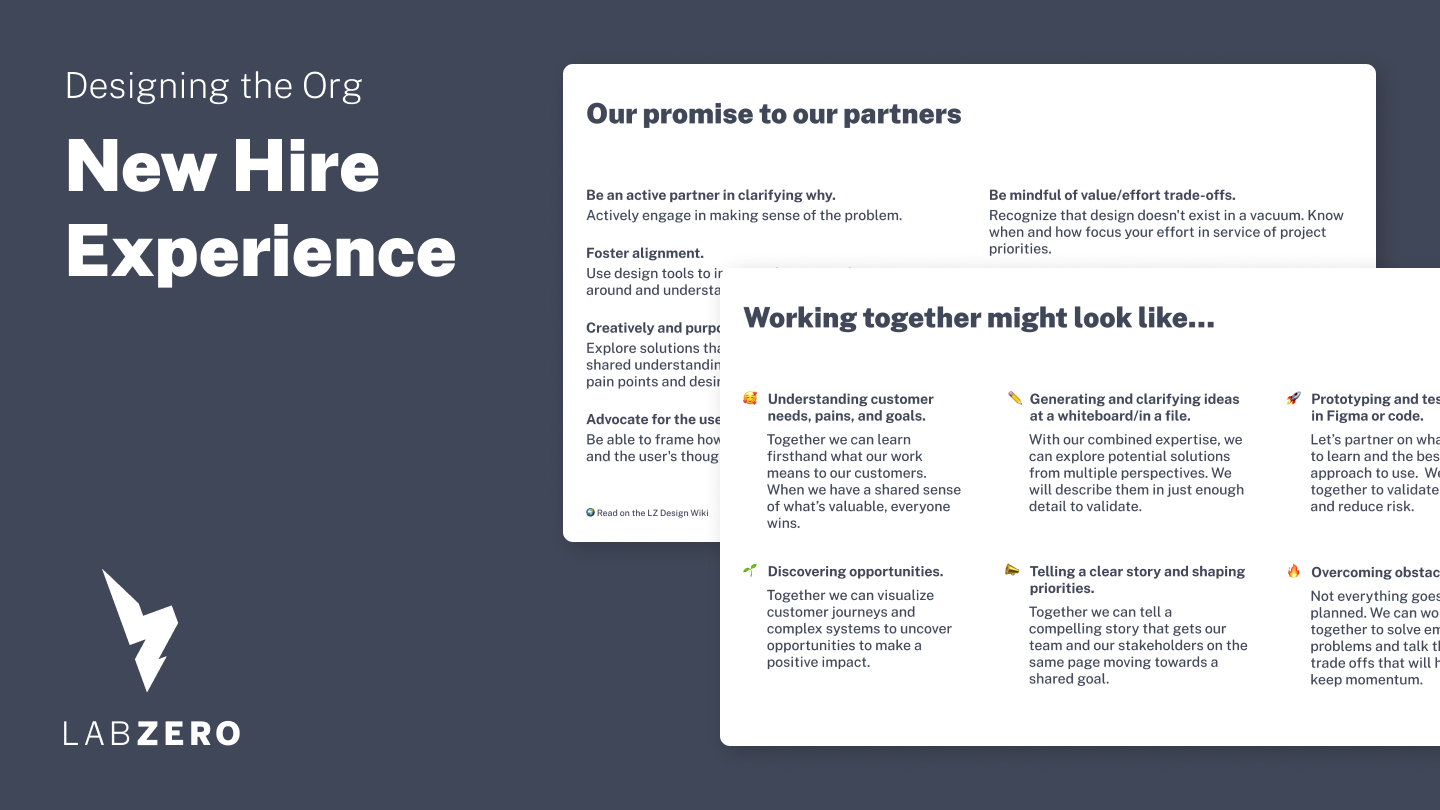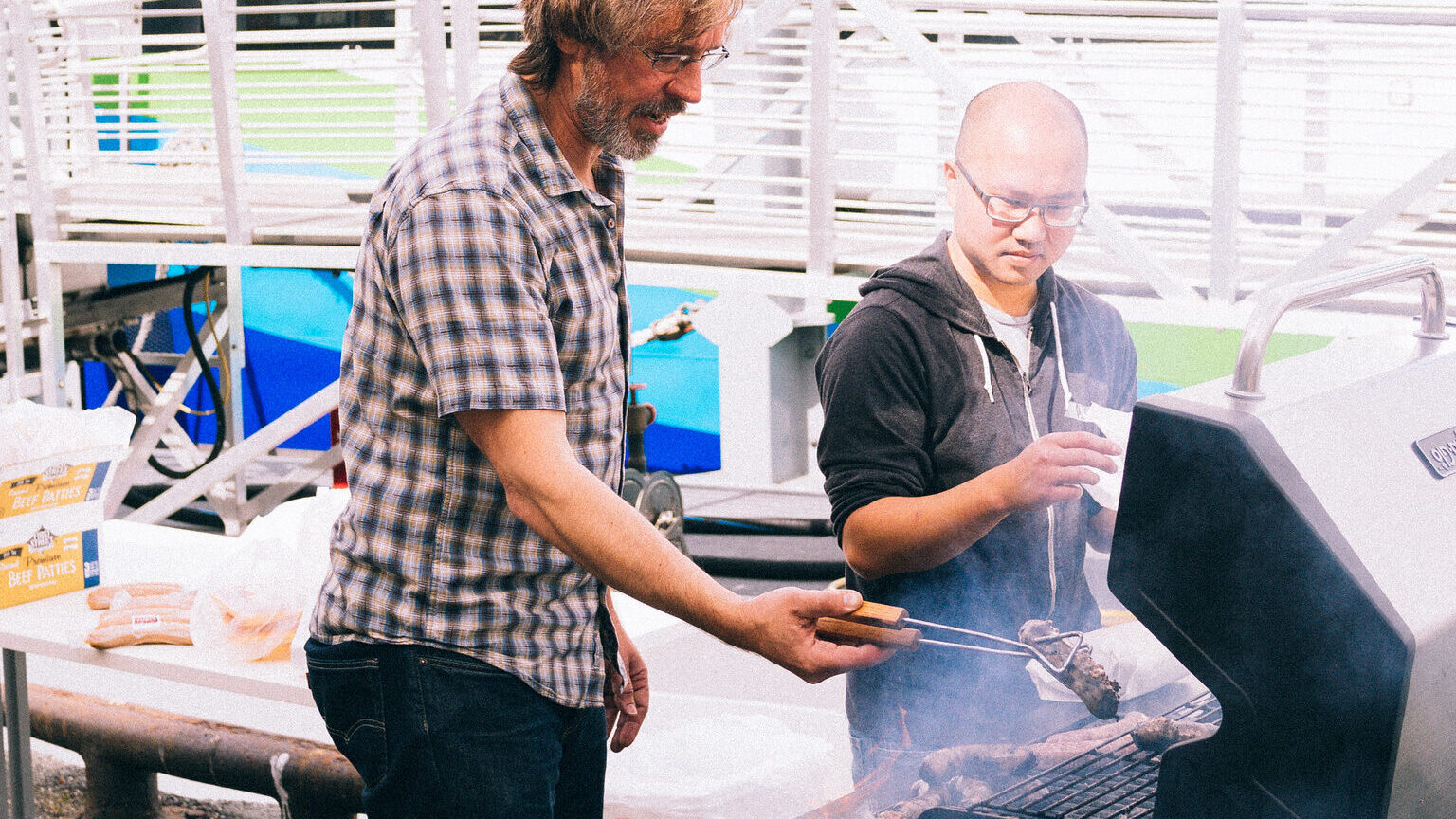

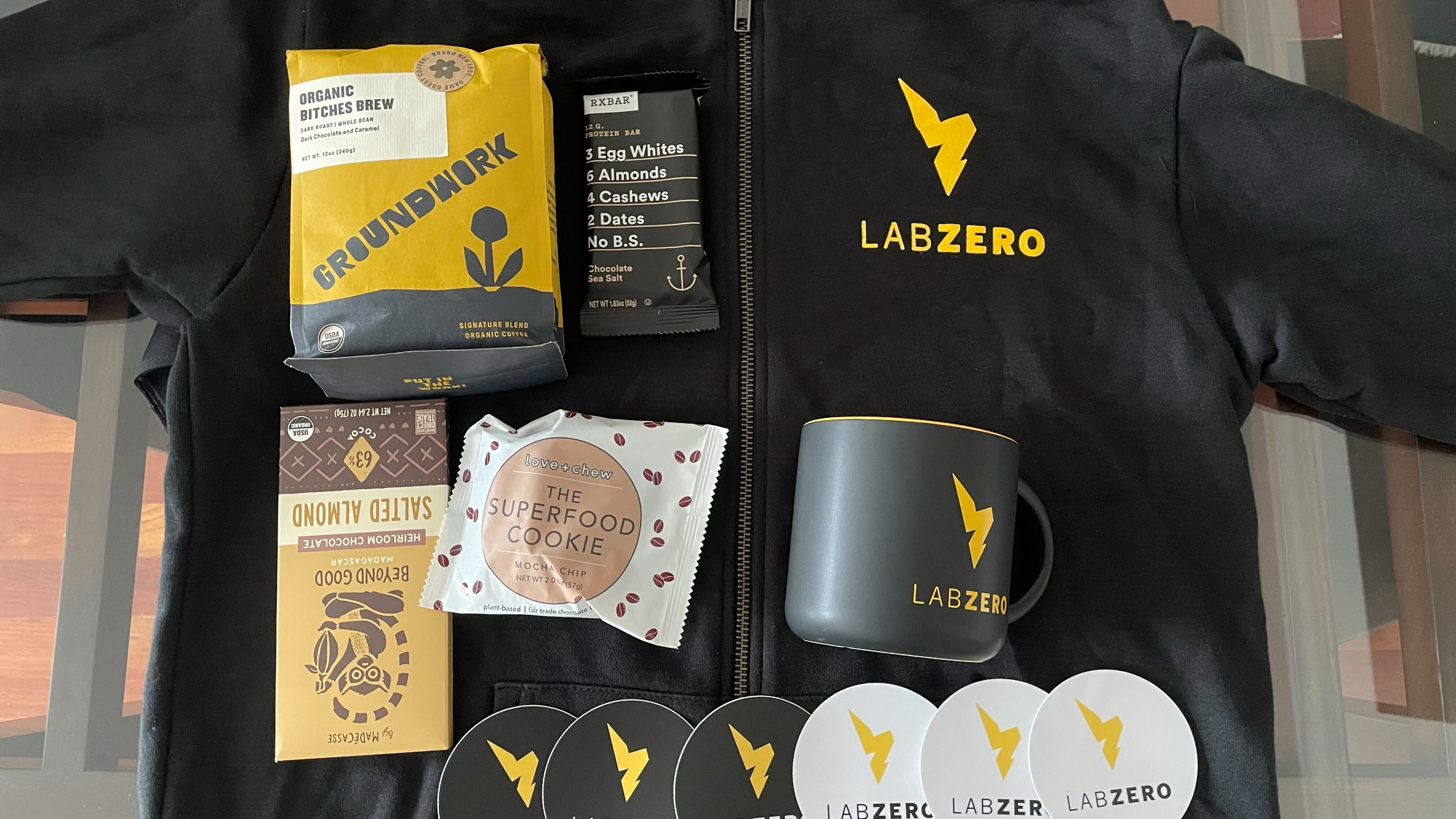
Role
Senior Product Designer and Director of Design
Industry
Custom software design and development, coaching, and leadership.
Timeline
Initial MVP: <1 week to create and test. Followed by continuous iteration and refinement based on new hire and support team feedback.
Outcomes
- Enthusiastic feedback: Both new hires and team members appreciated and contributed to the evolution of the onboarding process.
- Efficient delegation of tasks: A documented process allowed hiring managers to get support from other team members, reducing their workload.
Skills
- Design Leadership
- Coaching & Mentorship
- Service Design
- Process and Design Ops
- User Experience
Full case study available below
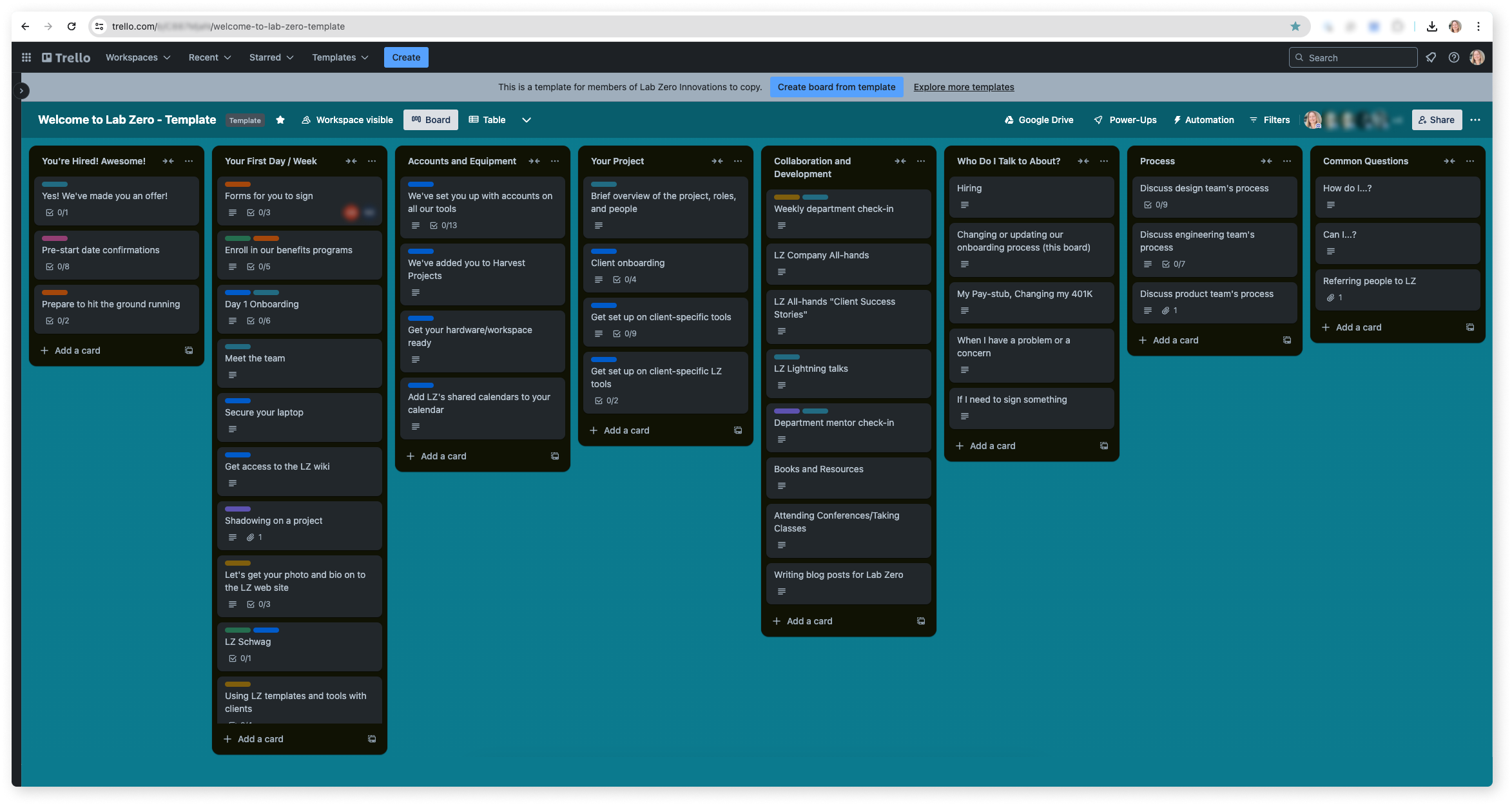
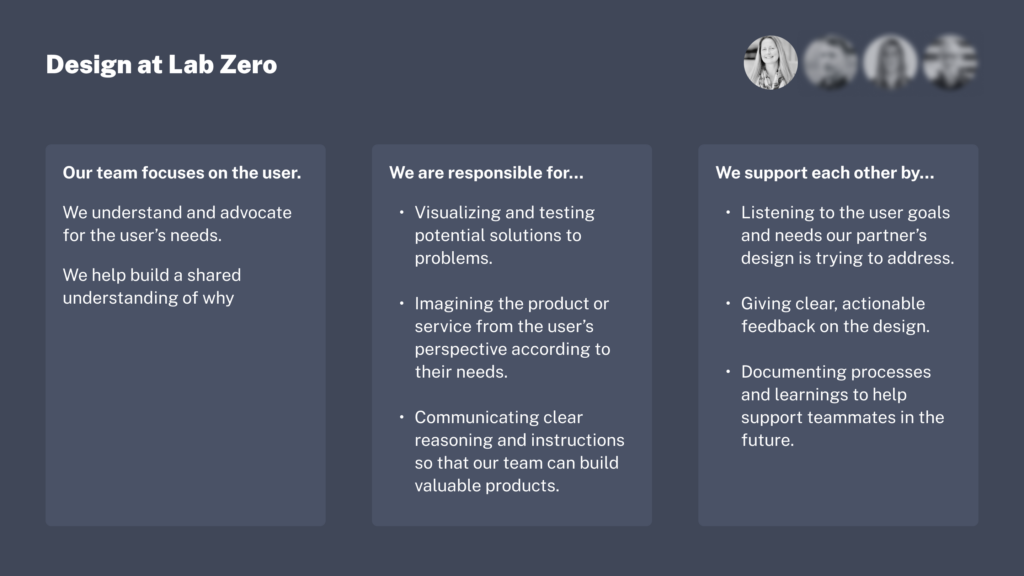
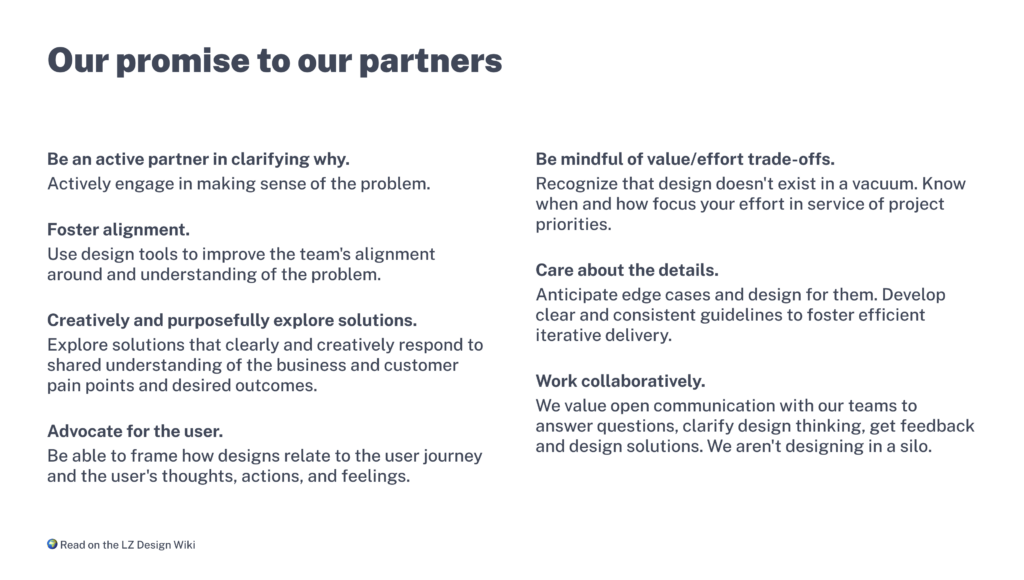
Context
Lab Zero is a cross-disciplinary product design and development agency. In addition to helping Startups and Fortune 500 clients articulate their 0–1 products and find product-market fit, Lab Zero provides interim leadership and coaches teams in effective collaboration and innovation practices.
Challenge
Hospitality is a semi-official value at Lab Zero.
In our early days on Pier 38, we prided ourselves on being a place where clients and people in our network could drop by and feel at home. We were well-known for hosting Friday lunches and became fast friends with many local restaurant managers and servers.
Our team was scrappy in the beginning. With no formal HR and all our contributors and leaders fully engaged in client work, onboarding was a do-it-yourself adventure.
As the team grew, playing things by ear led to inconsistency and confusion, which put the burden of managing logistics on the new hire. This made getting up to speed on their client work slow and frustrating. It became apparent that this impromptu onboarding process wasn’t making new hires feel welcome in a way that aligned with our values.
From a business perspective, we also left money on the table. Lab Zero would see a delay before a new hire could bill a client, and the client might see a delay before valuable work was live in front of their customers. On top of this, confusion around using our time-tracking system frequently meant delays in invoicing clients.
I saw an opportunity to improve the new hire experience through a lean service design challenge.
My goals:
- Set new hires up for success in a manner consistent with Lab Zero’s values.
- Reduce time to a new hire’s first valuable contribution to a client project.
- Reduce cognitive burden for the new hire, hiring manager, and supporting team.
Drafting our MVP
Lab Zero was fast-paced, and onboarding needs differed from discipline to discipline. I knew I would have a limited amount of time with my hiring partners, and because they were so busy with their client work, they might not have been able to articulate fully what their new hires needed in our limited time.
I knew I would need to start small with a flexible framework to allow me to build collaboratively and iterate frequently.
I adopted these three principles for my MVP onboarding resource:
- Keep it lightweight and collaborative so anyone can use and contribute to it.
- Tackle the most frequent questions/challenges to free the team to welcome new hires in their unique voice and style.
- Look for patterns and opportunities to iterate/anticipate future needs.
Lightweight research
To keep my research process lean, I focused on two general personas:
- Person helping the new hire onboard
- The new hire
At this stage in Lab Zero’s growth, we didn’t have formal hiring managers, and there wasn’t a set person responsible for onboarding. I kept this persona discipline agnostic, making the assumption that any needs specific to someone on the engineering, product, design, or agile teams could be addressed later.
Similarly, I chose to look for commonalities across all new hires and not break the persona down further by role, project, or expertise.
My initial research was intentionally as minimal as possible. Over lunch and coffee breaks, I asked people helping new teammates get set up:
- What questions do new hires typically have for you?
- What do you find yourself repeating?
- What do you wish everyone at Lab Zero knew?
I asked both new hires and established team members:
- What went smoothly when you joined Lab Zero? What could have been better?
- What would have been helpful to know your first week? First month?
Because these were informal conversations, I got a wide range of responses.
- “I didn’t know LZ would buy me a laptop. I assumed I needed to use my own, and the battery was flaky. It died in the middle of a presentation. :(“
- “I just want everyone to track their time in Harvest, so I don’t have to chase people down come invoice time.”
- “I wanted clarity on what time was billable to the client vs to LZ. One client said I could bill for travel time; the other didn’t. I wasn’t sure who to ask about that.”
- “I wish the first person in the office would make a pot of coffee.”
This was enough information to draft something for the team to react to.
Flexible exploration
The first iteration was a simple wiki page.
Because there were many client- and individual-specific topics to consider, I connected new hires with a point person to answer their questions. This helped me avoid the risk of overproducing content that might quickly become outdated. It also gave me a set person to check in with to see what questions were frequently asked.
Next, I addressed common points of confusion, such as tracking time with Harvest, arming the security system, and shipping packages to the office.
Adding info about disarming the security system was a surprisingly significant improvement for the new hire experience. Nothing says “Welcome to the company” like the panic of accidentally triggering the alarm during your first week in the office!
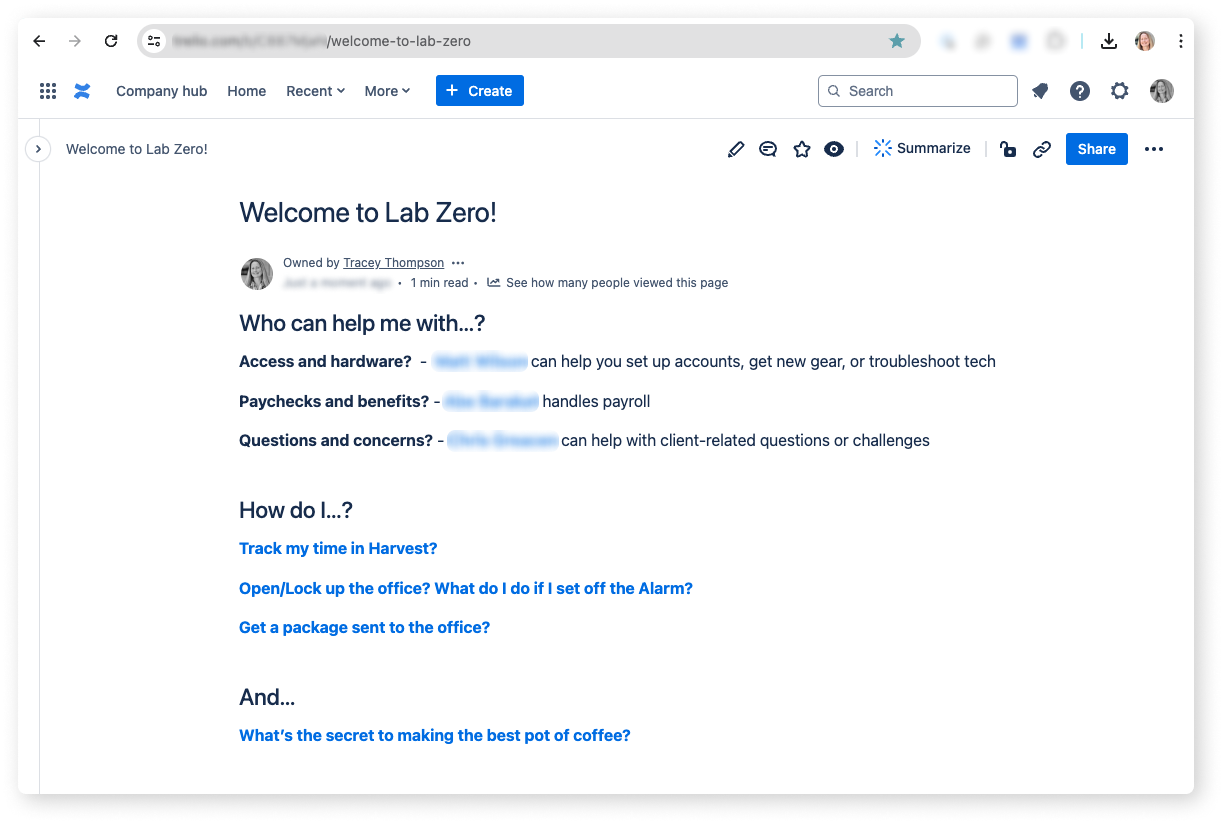
I intentionally didn’t dive into deeper topics like our values or processes because we were not yet aligned as a team on what we wanted to say. I knew we’d have opportunities to test and iterate as we aligned on what new content to include.
Feedback
I received many relieved “Thank yous” from my teammates who used this simple document. New hires felt reassured they had clear points of contact and a document to refer to for day-to-day details.
Over the next few months, I adapted the wiki to accommodate emerging feedback. I was thrilled to see my teammates engaging, adding and updating content as needed.
We still had a few disagreements about the best pot of coffee, but there is no accounting for taste. Disclaimer: I don’t drink coffee, so my attempts at brewing the house pot did not meet the team’s shared definition of success.
Early iteration
As I took on more responsibility for hiring product and design team members, I was well-positioned to iterate our processes and test ideas with new hires.
I migrated the wiki to a Trello board to give new hires and their supporting teammates a more tailored, checklist-type experience. This board included tasks for the team to complete before the new hire joined. The board could was shared with new hires to help them know what to expect on their first day.
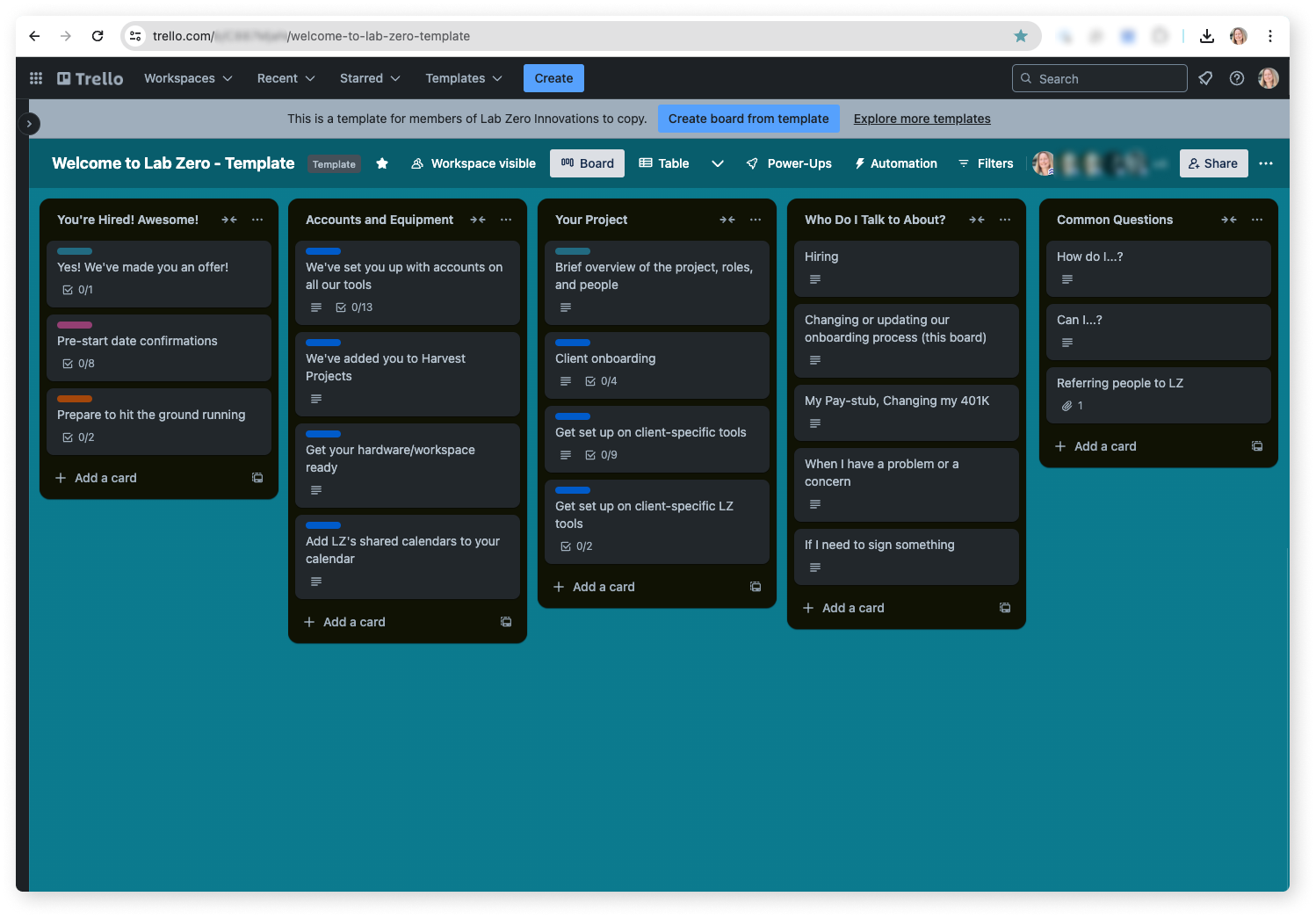
In addition to organization-wide resources, I partnered with Dean Baker, our Head of Design, to shape onboarding for the design team hires. Together, we articulated a team charter and playbook with resources to introduce new hires to our processes and ways of working together.
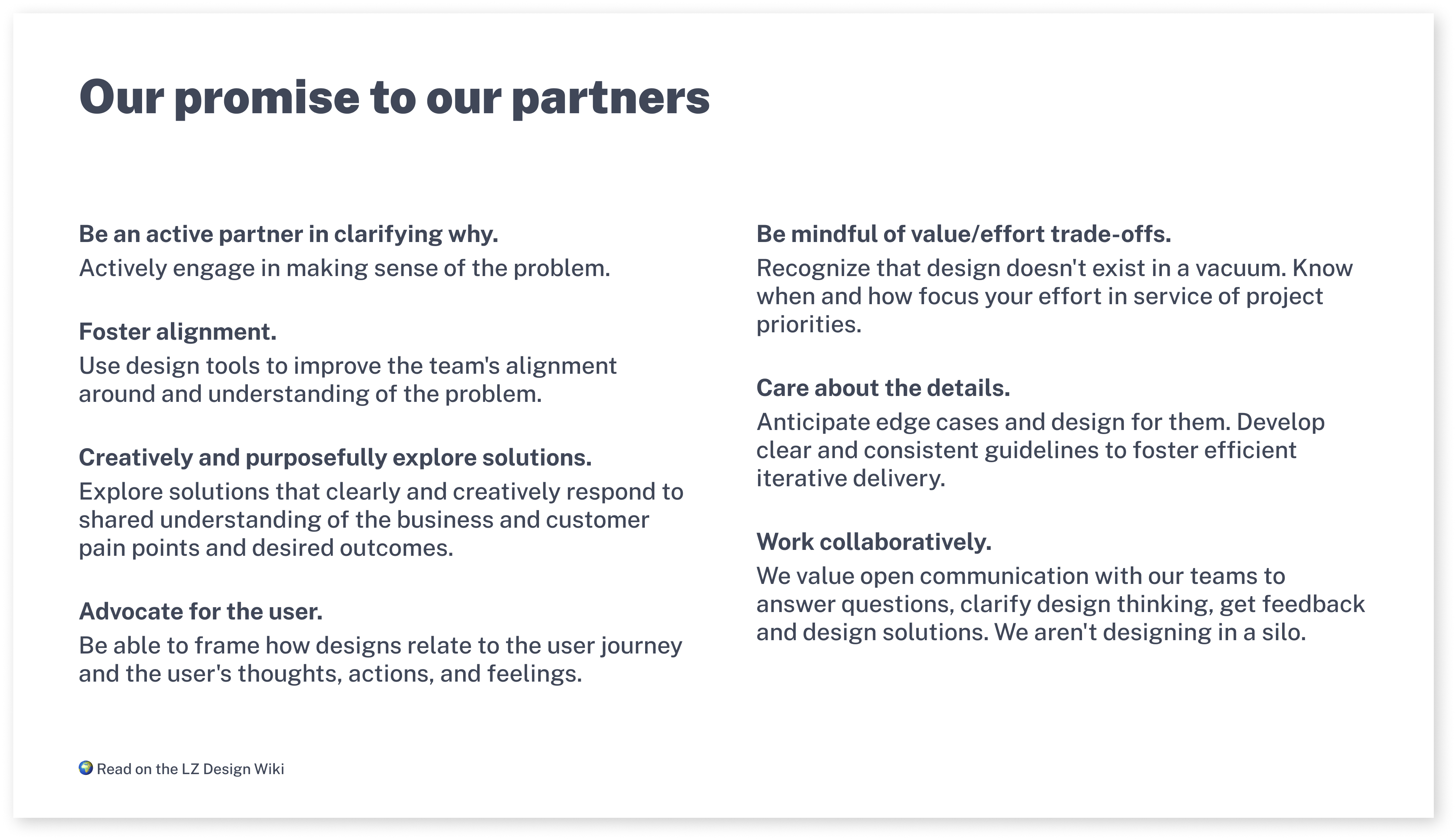
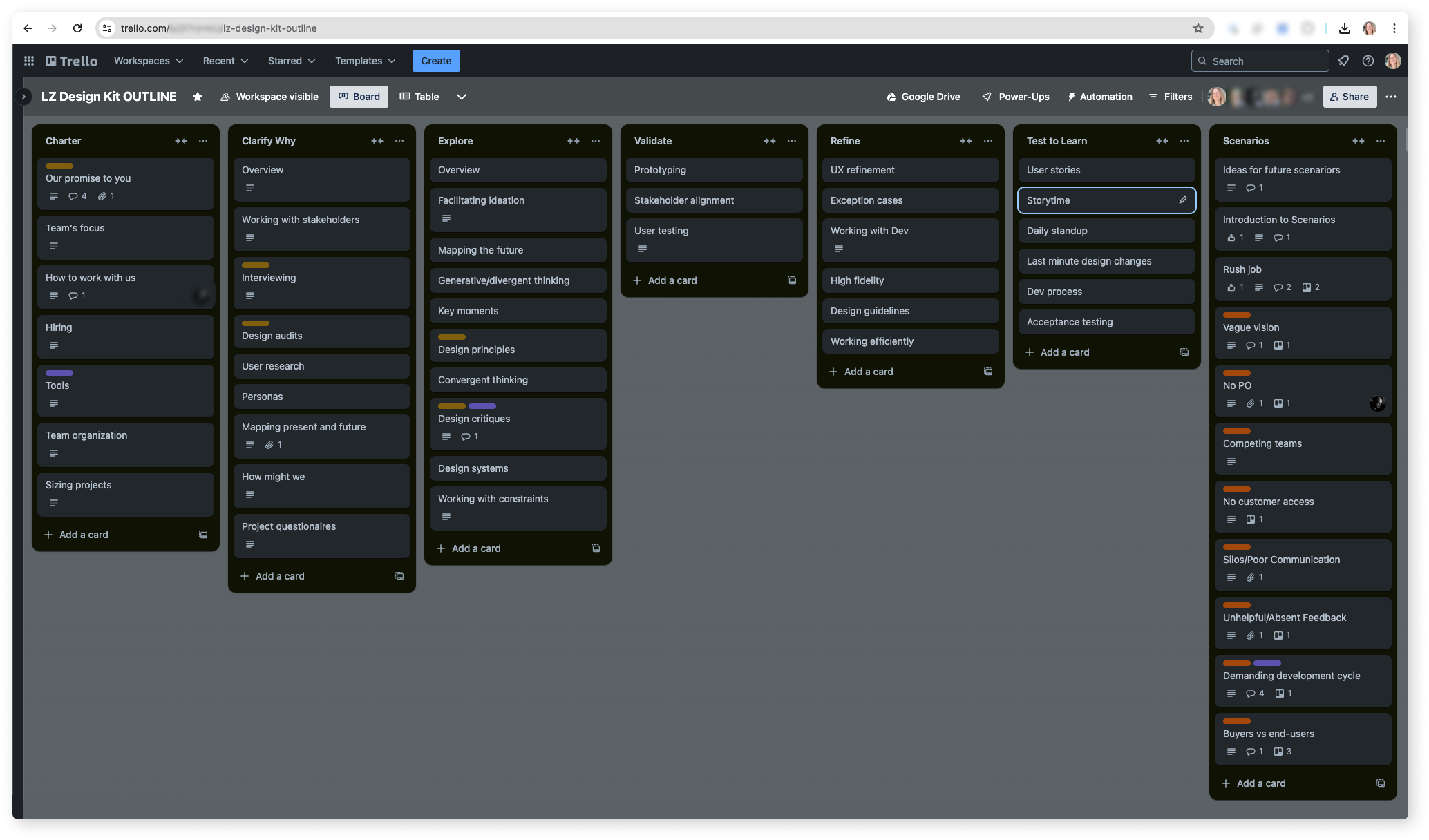
Evolving to meet our changing needs
The new hire experience and accompanying Trello board continued to evolve over the next 12 years.
Our growing HR and Operations team added cards for benefits and logistics. Hiring managers and mentors added links to our knowledge base and included information about how to contribute to the LZ community. We included information about referral bonuses to help encourage team growth.
To help new hires feel at home, the Operations team created a survey to learn more about their working style and dietary restrictions so that we had appropriate options for team lunches. They added welcome kits with gear and snacks to show appreciation for the individuals joining our team.
I was thrilled to see how the team adapted and expanded the process to meet the needs of new employees.

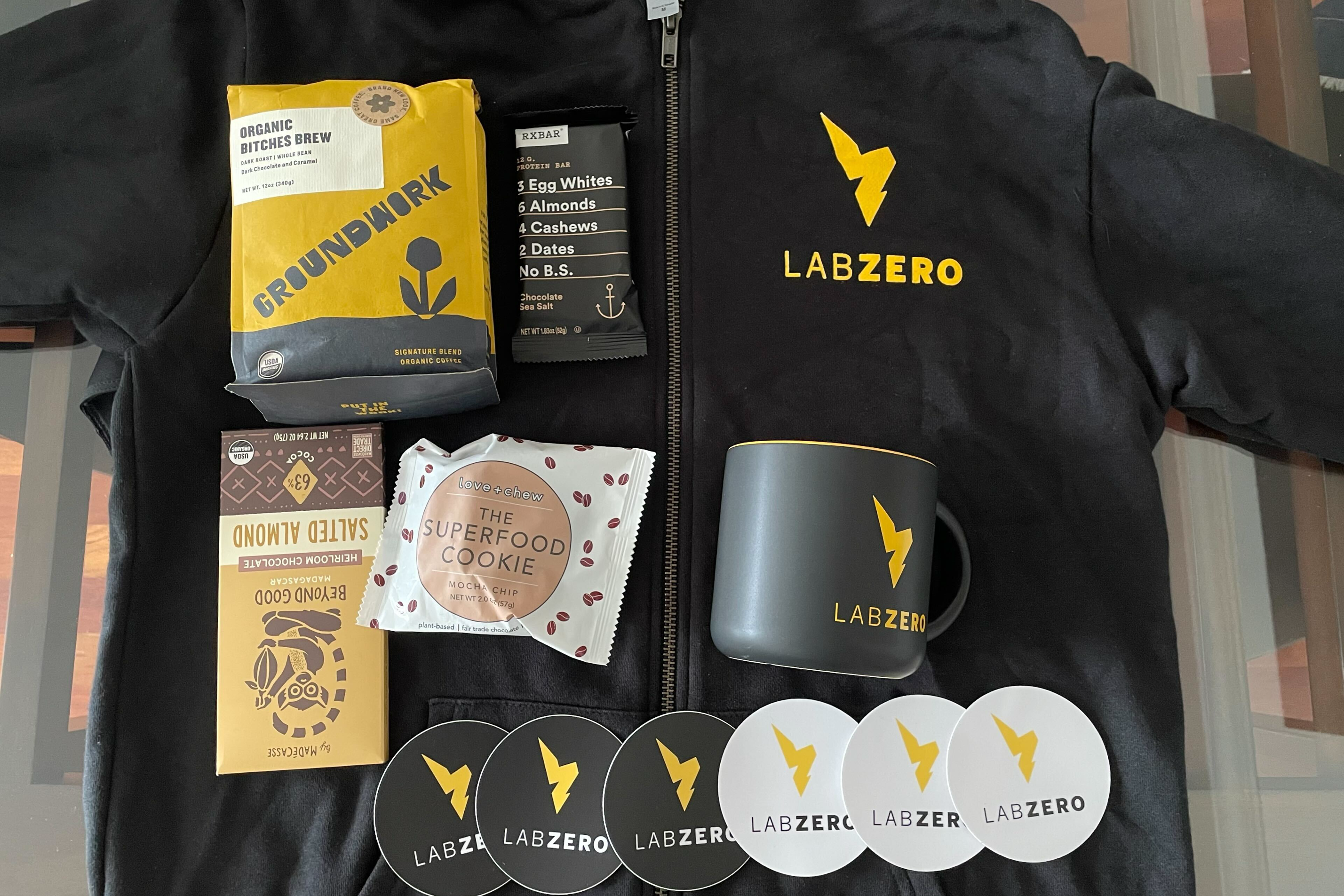
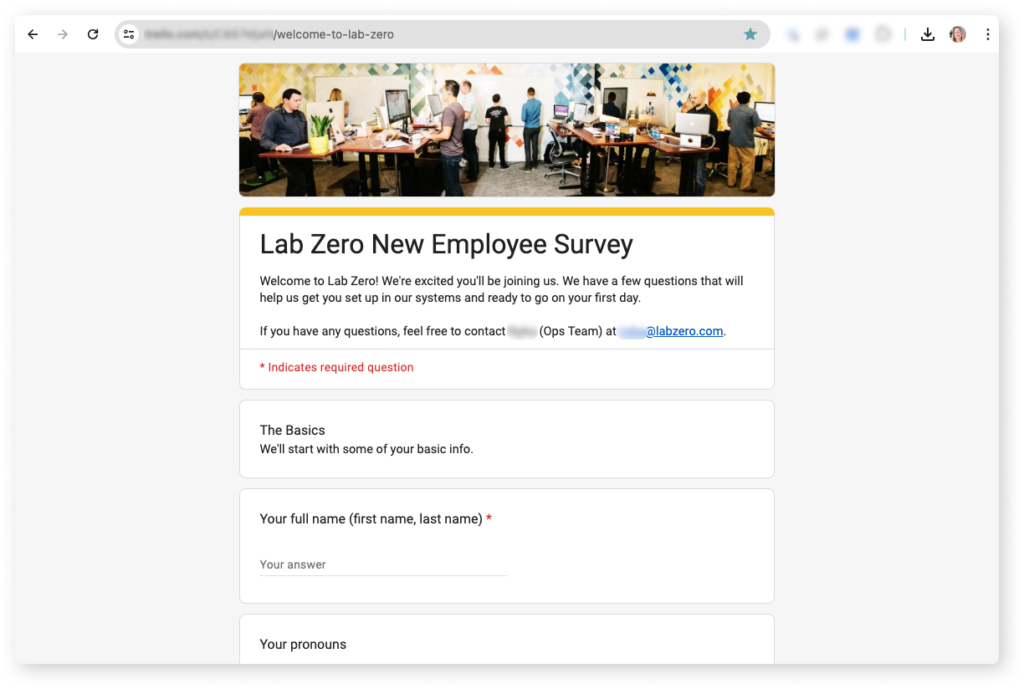
Adapting to remote work
When the company went fully remote in 2020, we added cards for setting up a home workspace and booking co-working spaces. We expanded onboarding to include one-on-one welcome conversations with the Product, Design, and Engineering leaders to foster cross-functional collaboration while working remotely.
Because we hired from all backgrounds, not just tech, I focused my new hire presentation on introducing the teams and how we work together. I wanted every Design hire to know their Product and Engineering partners were there to support them and vice versa.
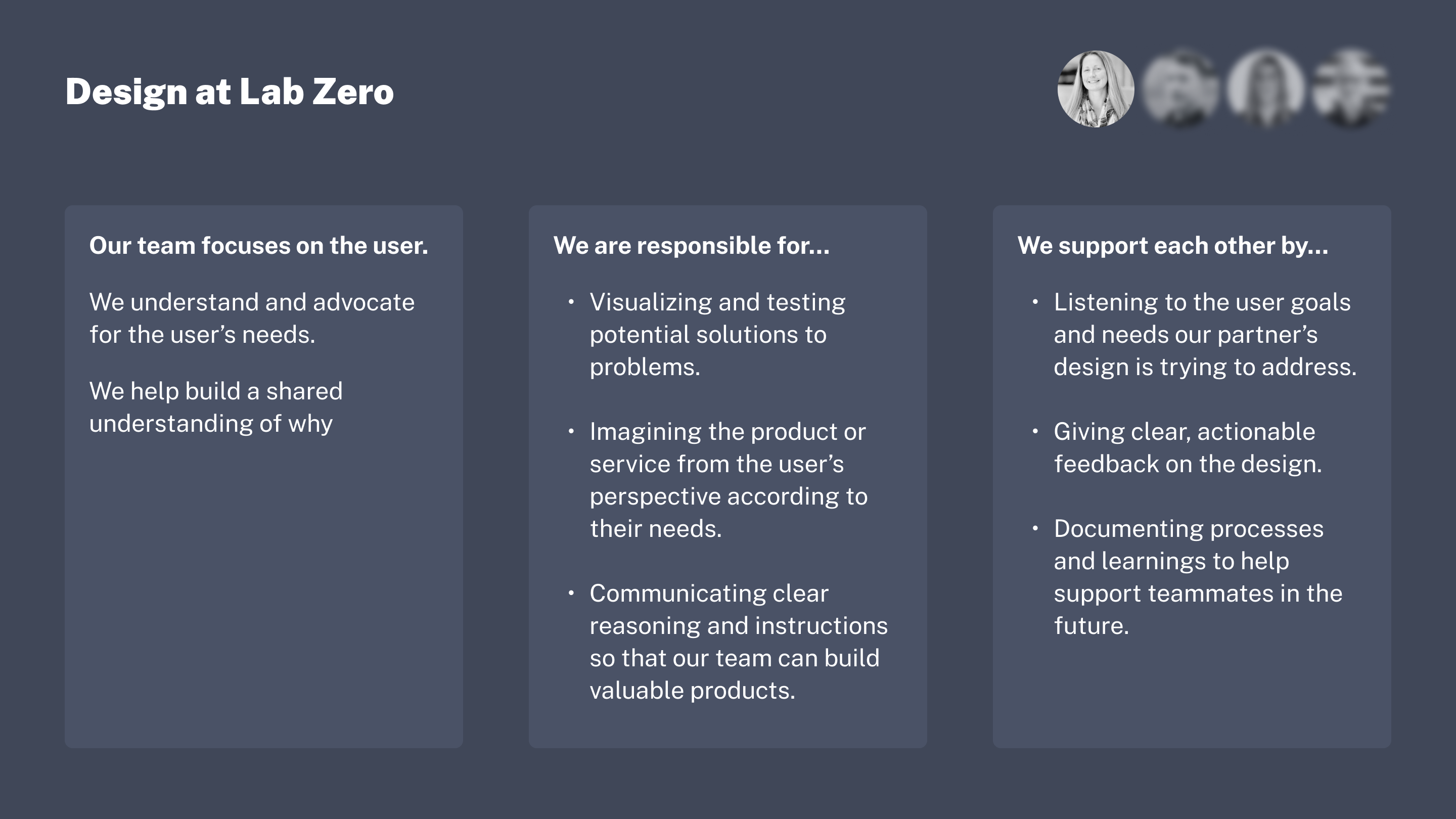
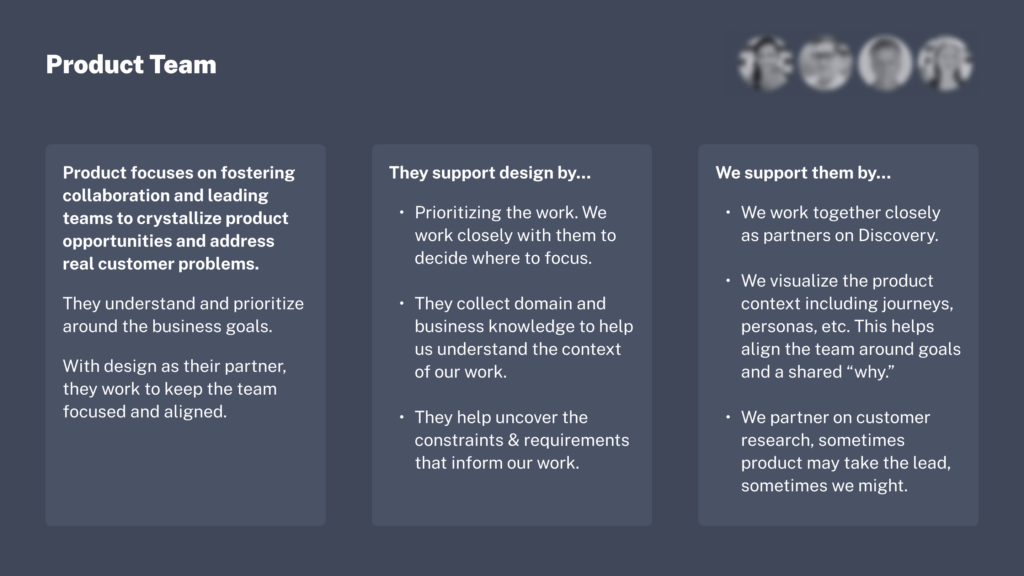
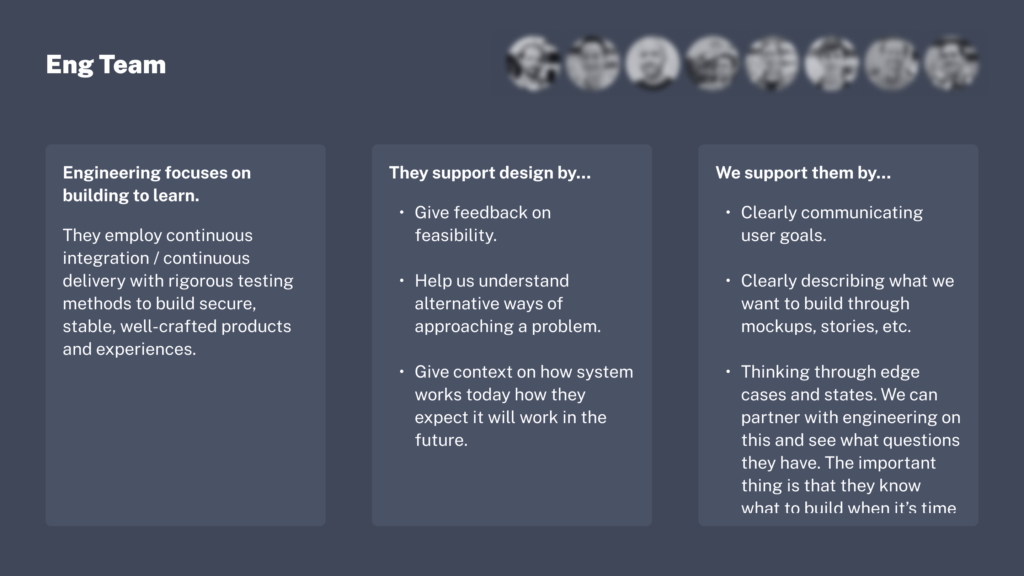
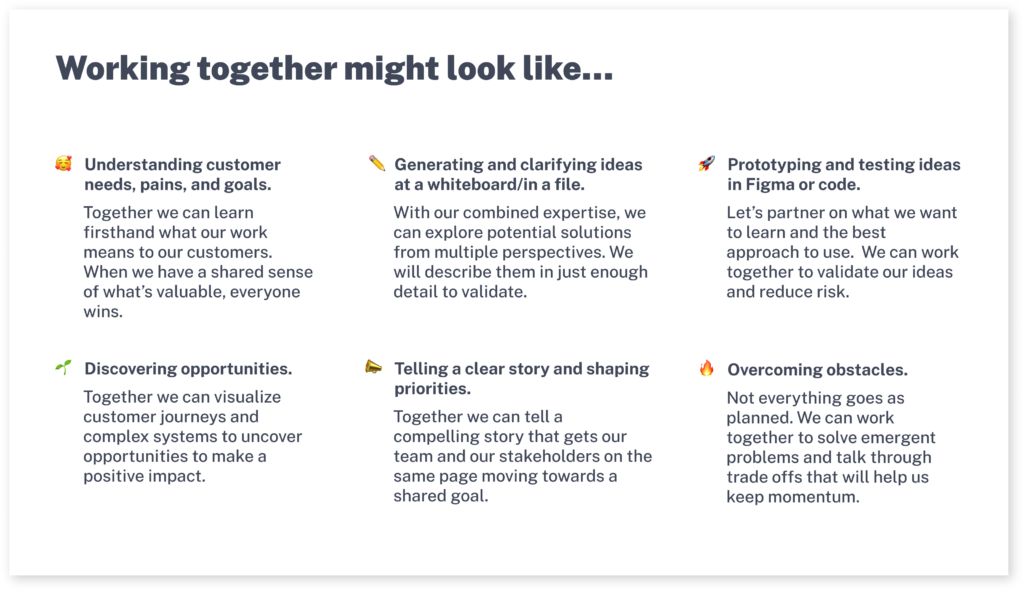
Improving the onboarding experience for our clients’ teams
I used what I learned building Lab Zero’s onboarding process to help our clients solve similar problems.
Many of our clients were startups or companies going through rapid growth. Like LZ’s early days, they were mission-focused and often lacked the staffing for a welcoming experience.
I kept detailed notes while going through my onboarding process, found gaps, and shared what I learned with others. I often found myself building a story about my clients’ customers, product ecosystem, and documentation valuable to new teammates on the client and LZ sides.
I frequently referred to the “how to work with design” conversation I crafted for LZ. Not everyone knows how to work with a designer or what to expect, even if they’ve been in the tech industry for a long time. Many organizations find themselves siloed or facing collaboration challenges. Highlighting ways we show up as partners extends the invitation to our cross-functional teammates to collaborate and come to use when they need help.
Outcomes and learning opportunities
Outcomes: Bringing a new teammate on board was no longer labor-intensive and stressful. The documentation allowed teams to train more members on onboarding and supporting new hires, allowing teams to delegate tasks as needed. This allowed the onboarding process to be more flexible while retaining the same level of quality.
New hires knew precisely who to ask for help if they had a question or a problem. I’d love to say this reduced new hire questions, but surprisingly, the number of questions stayed the same. What changed was the content of those questions. Free from minor logistics questions, new hires engaged quickly, asking deeper questions about their work and contributing quickly to our community.
Learning opportunities: Keeping onboarding lightweight and collaborative helped us learn quickly and respond to the needs of new hires and the team. It was great to see how the process evolved over the years.
I would have loved better metrics on whether this onboarding process sped up a new hire’s “time-to-value” metric. Our client’s internal onboarding differences meant we didn’t have a consistent variable to compare. Some clients took weeks to integrate new staff into their systems, others minutes. We continued looking for a way to measure success.
A future opportunity I would have liked to explore would be to collaborate on the one-on-one welcome conversations to ensure we tell a consistent story across disciplines while letting each team’s personality shine through.
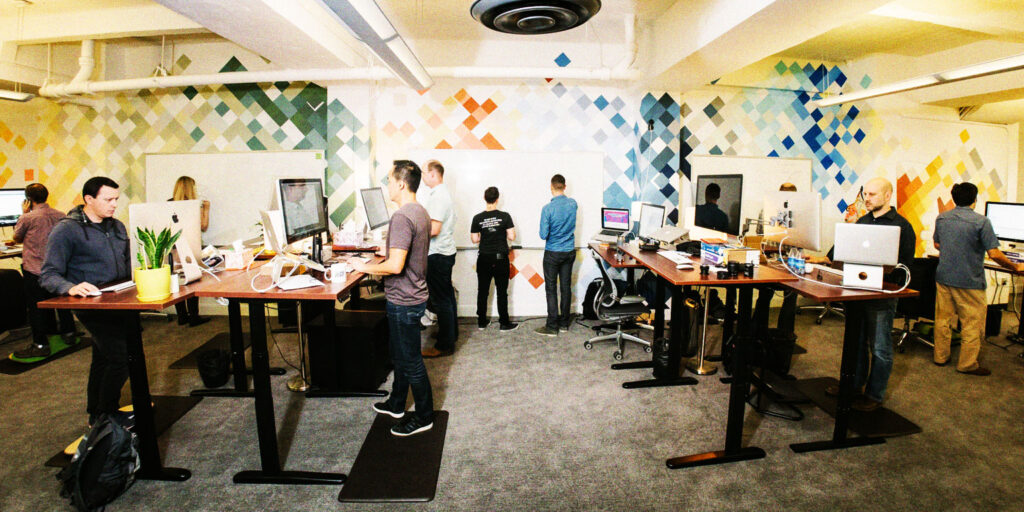
From the customer:
“Onboarding went from being opaque, inefficient and confusing to be transparent, efficient, guided and welcoming.”
Dean Baker, Head of Design
Lab Zero team photos by @Bicyclelad
